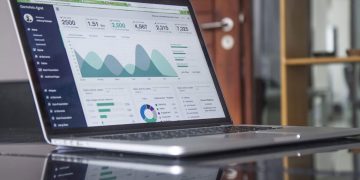First, we show you some typical cost functions and, second, we introduce a variety of methods that cost accountants can use to determine cost functions. Traditional methods of cost accounting are based on ‘standard’ costs and historical data. As said above, costs do not remain constant and using past/historical data to calculate the current cost of production can increase the chances of the results of cost accounting being inaccurate.
Project Accounting
Companies may be moved to adopt ABC by a need to improve costing accuracy, that is, understand better the true costs and profitability of individual products, services, or initiatives. ABC gets closer to true costs in these areas by turning many costs that standard http://wpestu.ru/html/13_2_9.htm views as indirect costs essentially into direct costs. Some methods of cost accounting, such as standard accounting and marginal costing, assume variable costs (costs that change when the production volume changes, such as raw materials or labor) to be constant. When you add up the cost of direct materials, direct labor, and direct expenses that are involved in the production of goods, you get prime cost. When you add the prime cost and overhead/indirect costs, you get works cost or factory cost.
Which activity is most important to you during retirement?
Once you know the total cost, you can add a profit (or markup) to set the price of your product or service. For example, let’s say a company uses cost accounting to calculate the total cost of manufacturing one smartphone as $500. The company can now add a markup of $200 to set the price of the smartphone as $700.
Cost Accounting: Decision Making
A number of costing methods and techniques are used for costing products, cost control, and managerial decisions. It is also worth noting that cost accounting collects data both in monetary and non-monetary terms. In turn, these data are compared to pre-established standards and budgets to exercise management control over the company’s operations. It helps company management to make decisions and is tailored to the specific needs of each separate firm. This differs from financial accounting, which must follow a set template and is used to inform people outside the company, such as investors, about its financial performance. The goal of lean accounting is to improve financial management practices within an organization.
- Cost accounting reflects this more dramatically than other accounting methods because of its pliability.
- Companies that want consistent profits use target costing to manage production costs.
- Unlike financial accounting for publicly traded firms, there is no legal requirement for cost accounting.
- Someone on our team will connect you with a financial professional in our network holding the correct designation and expertise.
Life Cycle Costing
Cost accounting is a process of recording, analyzing and reporting all of a company’s costs (both variable and fixed) related to the production of a product. This is so that a company’s management can make better financial decisions, introduce efficiencies and budget accurately. The objective of cost accounting is to improve the business’s net profit margins (how much profit each dollar of sales generates). The objectives of this type of accounting include cost control, cost computation, and cost reduction.
Along with The Balance, Yvette’s work has been published in Fit Small Business, StoryTerrace, and more. Our goal is to deliver the most understandable and comprehensive explanations of financial topics using simple writing complemented by helpful graphics and animation videos. We follow strict ethical journalism practices, which includes presenting unbiased information and citing reliable, attributed resources. Estimates, plans, budgets, and other aids are provided to management to compare the desired results and the actual results. The ascertainment of cost and the provision of knowledge about its constituents are the two broad objectives of costing.
It deals with improving financial management techniques by identifying the costs wasted. As a result, the concerned department cuts down unnecessary costs and adds value to the more important tasks, increasing the firm’s productivity. The concept of https://ujkh.ru/forum.php?PAGE_NAME=profile_view&UID=115891 is classified into different categories, given the nature of costs a company normally records. These costs are created decisions made in the past that cannot be changed by any decision that will be made in the future.
- First, we show you some typical cost functions and, second, we introduce a variety of methods that cost accountants can use to determine cost functions.
- For example, while QuickBooks is very robust, it may involve a steeper learning curve and come at a higher cost than competitors–especially for businesses that want to use its payroll features.
- Investors can calculate a company’s operating expense ratio, which shows how efficient a company is in using its costs to generate sales.
- With this in mind, a sound system of costing helps to derive various advantages.
- In contrast, cost accounting isn’t limited to these regulations and standards since it’s for the company’s use and not external purposes.
- The trinkets are very labor-intensive and require quite a bit of hands-on effort from the production staff.
Product and service costing
Cost measurement and allocation techniques are used not only to assign incurred costs to products or services but also to plan future activities. Direct costing charges all costs incurred when creating a product, process or service directly to the product, process or service, with indirect costs written off as a profit or a loss. In contrast, https://pkforum.ru/index.php?topic=13415.0 isn’t limited to these regulations and standards since it’s for the company’s use and not external purposes.
Value streams are the profit centers of a company; a profit center is any branch or division that directly adds to a company’s bottom-line profitability. Activity-based costing (ABC) identifies overhead costs from each department and assigns them to specific cost objects, such as goods or services. These activities are also considered to be cost drivers, and they are the measures used as the basis for allocating overhead costs.
























